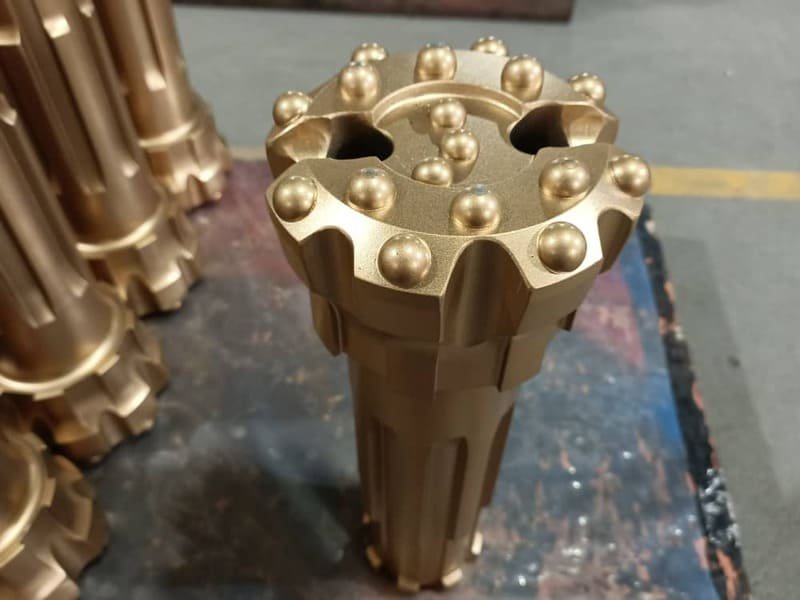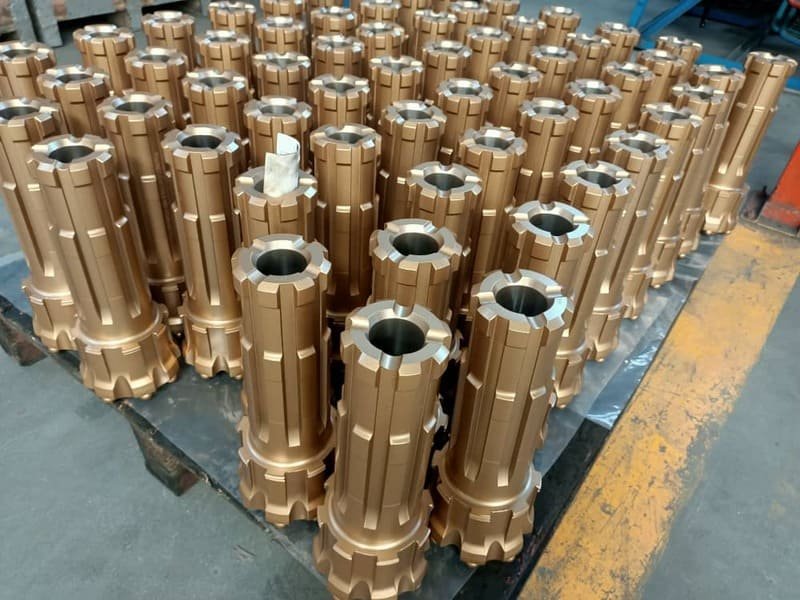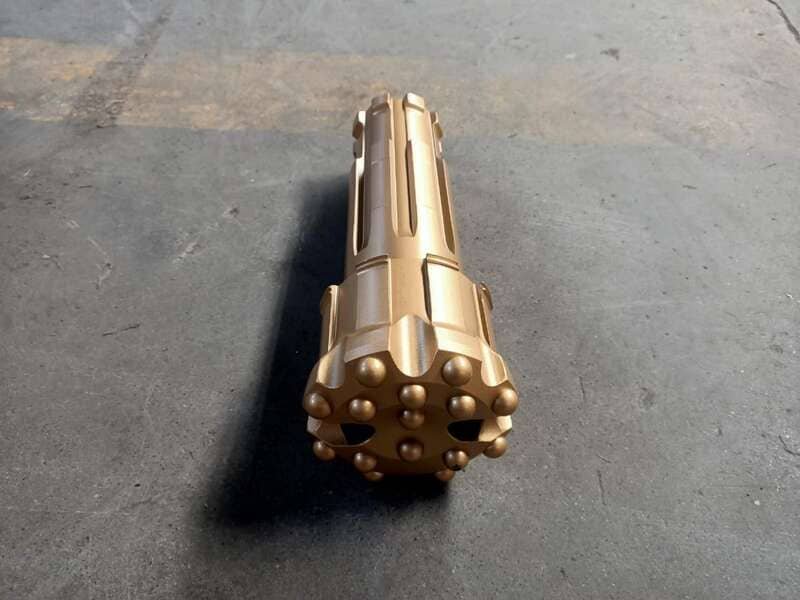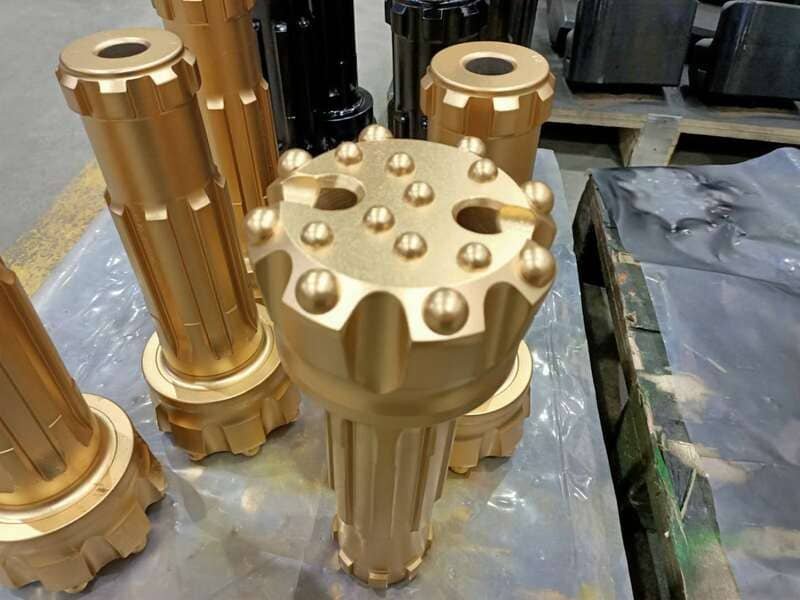Rust can be a nightmare for DTH drill bits, threatening their performance and lifespan.
When it comes to protecting DTH drill bits from rust, the top anti-rust coatings are tungsten carbide, chromium plating, black oxide, and titanium nitride. These coatings provide excellent durability, corrosion resistance, and longevity for drill bits.
Thinking back to my early days in drilling, I recall the frustration of dealing with rust-eaten tools. I quickly learned that choosing the right anti-rust coating could save both time and money. In this post, I want to share how different coatings like tungsten carbide and titanium nitride can make a world of difference. Let's explore what each brings to the table and why they might be the perfect fit for your needs.
Tungsten carbide is the best anti-rust coating for DTH drill bits.True
Tungsten carbide enhances durability and protects against corrosion.
Black oxide coatings do not extend the lifespan of drill bits.False
Black oxide coatings protect against rust, extending drill bit lifespan.
Why is Tungsten Carbide Coating So Effective?
Ever wondered what keeps tools going strong in harsh environments? Tungsten carbide coating might just be the secret sauce.
Tungsten carbide coating is incredibly effective because of its unmatched hardness, superb wear resistance, and capacity to endure extreme conditions, making it a go-to for enhancing tool performance and longevity.

Characteristics of Tungsten Carbide Coating
I remember the first time I encountered tungsten carbide coating on a tool—it was like meeting a superhero of the industrial world. Its extreme hardness is legendary, surpassing even some of the toughest materials. This isn't just about being hard; it's about how its dense molecular structure contributes to its remarkable wear resistance. Imagine having a tool that shrugs off high friction and abrasion like they're minor annoyances. For industries where efficiency is key, this means less frequent replacements and maintaining peak performance longer.
Applications in Industrial Settings
Think of the oil and gas industry, where drill bits face grueling conditions. The first time I saw a tungsten carbide-coated bit in action, I was amazed at how it just kept going despite severe wear and tear. It’s like having a reliable friend who never lets you down, significantly cutting operational costs by reducing downtime. Across various sectors like machining, mining, and drilling, this coating's robustness is indispensable.
Chemical Composition and Bonding
What truly fascinates me about tungsten carbide is its chemical stability. I’ve seen it withstand oxidation and corrosion even when subjected to high temperatures. This makes it perfect for challenging environments where lesser coatings might falter. The bond strength between the coating and the substrate is akin to a rock-solid friendship—staying intact under mechanical stress no matter what. Discover more about chemical stability1 and its role in durability.
Comparative Analysis with Other Coatings
When I compare tungsten carbide with other coatings like chromium or titanium nitride, its advantages are clear. Chromium has its merits with corrosion resistance, but if wear resistance is your main concern, tungsten carbide is unbeatable.
| Coating Type | Hardness | Wear Resistance | Corrosion Resistance |
|---|---|---|---|
| Tungsten Carbide | Very High | Excellent | Good |
| Chromium | Moderate | Moderate | Excellent |
| Titanium Nitride | High | Good | Moderate |
For a detailed dive into coating comparisons2, see how these materials perform under various conditions.
Technological Advancements
The world of tungsten carbide coatings is always evolving. Recent advancements have truly pushed its efficacy to new heights. Innovative application techniques ensure even distribution and optimal adhesion, which is crucial for maximizing the coating's potential. And then there's the research into nanoparticle integration—it's opening doors to even greater hardness levels. Stay informed on technological innovations3 that are shaping the future of coatings.
Tungsten carbide coating is softer than titanium nitride.False
Tungsten carbide has higher hardness than titanium nitride.
Tungsten carbide resists oxidation at high temperatures.True
Its chemical stability prevents oxidation even in high heat.
How Does Chromium Plating Enhance Drill Bit Performance?
Ever wonder how a little bit of chrome can make a huge difference?
Chromium plating enhances drill bit performance by boosting hardness and wear resistance, reducing friction, and offering excellent corrosion protection. This results in prolonged tool life and increased efficiency in drilling operations.

Increased Hardness and Wear Resistance
I remember the first time I saw a chromium-plated drill bit in action; it was like watching a superhero take the stage. The shiny surface didn't just look cool—it was tough, ready to take on abrasive materials without breaking a sweat. This hardness comes from the thin layer of chromium that fortifies the bit, enabling it to stay sharper for longer. It's this durability that makes these bits perfect for tough drilling applications4, where lesser tools might falter.
Reduced Friction
Working with chromium-plated bits feels like buttering toast. The smooth, slick surface effortlessly glides through materials, reducing friction and heat. Imagine using less energy and generating less heat—it's like your drill bit is giving you a break! This also means fewer stops for cooling down, making your work more efficient and enjoyable, contributing to improved drilling efficiency5.
Superior Corrosion Protection
When you're knee-deep in challenging environments, knowing your tools won't rust is a big relief. Chromium plating offers robust corrosion protection, shielding your drill bits from moisture and other corrosive elements. This protection is a game-changer in industries with demanding environments6, where reliability can make or break your project timeline.
Enhanced Thermal Properties
The reflective nature of chromium is like having a built-in sunshade for your drill bit. By reducing heat absorption, it manages thermal buildup efficiently during drilling. Remember the time I faced overheating issues with standard bits? Switching to chromium-plated ones made all the difference, preventing premature wear and keeping my operations smooth.
Comparison Table of Benefits:
| Feature | Chromium Plating |
|---|---|
| Hardness Increase | Yes |
| Wear Resistance | Excellent |
| Friction Reduction | Significant |
| Corrosion Protection | Superior |
| Heat Management | Improved |
Understanding these benefits helps me make smarter choices when selecting drill bits for my projects. Opting for chromium-plated bits ensures I get the most out of my tools, maximizing efficiency and longevity.
Chromium plating increases drill bit hardness.True
Chromium forms a hard layer, enhancing the drill bit's surface hardness.
Chromium plating reduces friction in drilling.True
The smooth chromium surface acts as a lubricant, lowering friction.
Why Choose Titanium Nitride Coating for Your DTH Drill Bits?
Ever felt the frustration of drill bits wearing out too soon? Here's how titanium nitride coating can transform your drilling experience.
Titanium nitride coating dramatically boosts the hardness and wear resistance of DTH drill bits, extending their lifespan. It minimizes friction, keeping the bits sharp and efficient even in harsh drilling conditions.

The Science Behind Titanium Nitride Coating
I'll never forget the first time I had to replace a set of worn-out drill bits much sooner than expected. It was a costly lesson in understanding the importance of choosing the right coating. Titanium nitride (TiN) is a ceramic material known for its impressive hardness. Applying this as a coating to DTH drill bits creates a robust, wear-resistant layer that significantly enhances durability—a must-have for the high-impact environments typical in drilling.
Key Benefits of TiN Coating
1. Enhanced Wear Resistance
Imagine not having to replace your drill bits as often, saving time and money. That's the magic of TiN coatings. They increase surface hardness, providing superior wear resistance, which means fewer replacements and more savings over time.
| Coating Type | Wear Resistance |
|---|---|
| Titanium Nitride (TiN) | High |
| Tungsten Carbide | Moderate |
| Black Oxide | Low |
2. Reduced Friction and Heat Generation
I remember the struggle of dealing with bits that heated up too quickly, causing inefficiencies and potential damage. With TiN, the smooth surface reduces friction between the drill bit and the material being drilled. Less friction means less heat generation, preventing premature wear or damage, and thus improving efficiency7 during drilling operations.
Comparison with Other Coatings
When compared to alternatives like tungsten carbide or black oxide, TiN stands out with a unique combination of benefits. While tungsten carbide is known for hardness, TiN also offers excellent corrosion resistance, making it versatile for various geological conditions.
- Tungsten Carbide: Primarily enhances hardness.
- Chromium Plating: Offers corrosion resistance.
- Black Oxide: Provides minimal friction reduction.
| Attribute | TiN | Tungsten Carbide | Chromium Plating |
|---|---|---|---|
| Hardness | High | Very High | Moderate |
| Corrosion Resistance | Excellent | Low | High |
| Friction Reduction | High | Low | Moderate |
Application in Diverse Geological Conditions
As someone who deals with drilling across varied terrains, I appreciate how TiN-coated DTH drill bits perform exceptionally well across diverse geological settings—from soft sediments to hard rock formations. Their ability to maintain sharpness under such varied conditions makes them a preferred choice for drilling experts8 worldwide.
With these advantages, it's clear why many industry professionals are shifting towards titanium nitride coating for their drilling needs. However, understanding how TiN fits into specific drilling scenarios can further refine its application, optimizing performance outcomes.
TiN coating increases drill bit hardness.True
TiN is known for its remarkable hardness, enhancing tool durability.
TiN-coated bits generate more heat than uncoated ones.False
TiN reduces friction, thus minimizing heat generation during drilling.
Conclusion
Explore the best anti-rust coatings for DTH drill bits, including tungsten carbide, chromium plating, black oxide, and titanium nitride, each offering unique benefits for durability and performance.
-
Learn about chemical stability's role in resisting oxidation and corrosion, enhancing durability. ↩
-
Discover how tungsten carbide compares with chromium and titanium nitride in industrial settings. ↩
-
Explore the latest innovations improving hardness and adhesion in tungsten carbide coatings. ↩
-
Explore how chromium plating enhances wear resistance and extends tool life, crucial for tough applications. ↩
-
Discover the role of chromium plating in reducing friction, leading to more efficient drilling processes. ↩
-
Learn about the corrosion protection offered by chromium plating, essential for reliability in harsh conditions. ↩
-
Understand how TiN coatings reduce friction and improve drilling efficiency. ↩
-
Learn why TiN-coated bits excel in diverse geological environments. ↩








